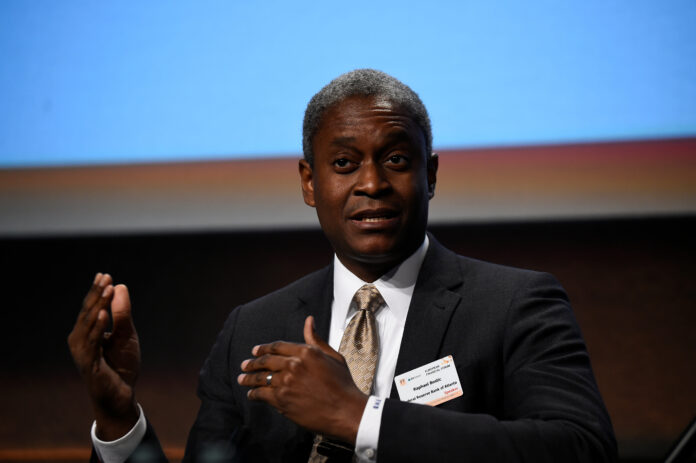Tech shares popped this morning, leading the Nasdaq Composite to a notable 1.2% gain near the daily high and effectively reducing its year-to-date losses to a mere 0.2%. The S&P, meanwhile, experienced a modest 0.3% increase as the Dow faced a slight setback, dropping 0.2% or 80 points.
Apple Inc. played a pivotal role in this surge, with its shares ascending by 2.8% after Bank of America shifted its rating to ‘buy’, projecting over 20% potential growth in the next year. This marks Apple’s best performance since May 5, 2023. The Technology Select Sector SPDR Fund also experienced a significant uptick, increasing 1.6% to an all-time high.
Another key player in the tech rally was Taiwan Semiconductor Manufacturing Co, the largest global chipmaker. It soared by 7% following its earnings and revenue beat in the fourth quarter, which subsequently led to a 2.5% rise in the VanEck Semiconductor ETF, reaching a new peak.
In the bond market, the yield on the 10-year Treasury note climbed over 11 basis points, rising to 4.064% through noon. This rise was influenced by newly released jobs data indicating a continually tight labor market, with unemployment claims falling to 187,000 in the week ending January 13. This robust labor market and strong consumer spending, as shown in the December retail sales report released yesterday, cast doubt on the Federal Reserve’s likelihood of implementing aggressive rate cuts.
Those hawkish fears were then amplified when Cleveland Fed President Raphael Bostic spoke just a few hours ago. Bostic’s comments provided crucial insights into the Fed’s rate-cutting agenda, but they also spiked stocks lower and yields higher.
“Because I’m data dependent, I have incorporated the unexpected progress on inflation and economic activity into my outlook, and thus moved up my projected time to begin normalizing the federal funds rate to the third quarter of this year from the fourth quarter,” Bostic said. His remarks offer a perspective that aligns with the median projection of Fed officials, which anticipates three rate cuts in 2024 — a more conservative forecast compared to market expectations of six.
Bostic further elaborated:
“If we continue to see a further accumulation of downside surprises in the data, it’s possible for me to get comfortable enough to advocate normalization sooner than the third quarter. But the evidence would need to be convincing.”
He acknowledged potential risks that could affect his expectations, including economic stability, job market dynamics, and the trajectory of inflation. Bostic also emphasized the need for vigilance, stating, “In such an unpredictable environment, it would be unwise to lock in an emphatic approach to monetary policy.”
That’s yet another Fed official who’s come out to say that the market is getting way ahead of itself in anticipating six whole rate cuts this year. What’s more, the Fed clearly doesn’t expect to start cutting in March.
Treasury futures still lean slightly toward a cut over a no-cut outcome at the March FOMC, as the CME Group’s FedWatch tool shows a 55% chance of a rate cut. These odds are derived from Treasury market activity and should continue to fall if yields rise.
And, given the current Treasury rout that’s taking place, investors are likely to see the odds of a cut in March flip below 50%. If that happens, the market’s recent selling could intensify greatly, pulling down overachieving tech stocks in the process.









